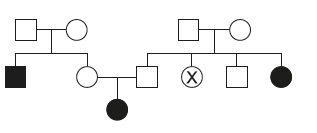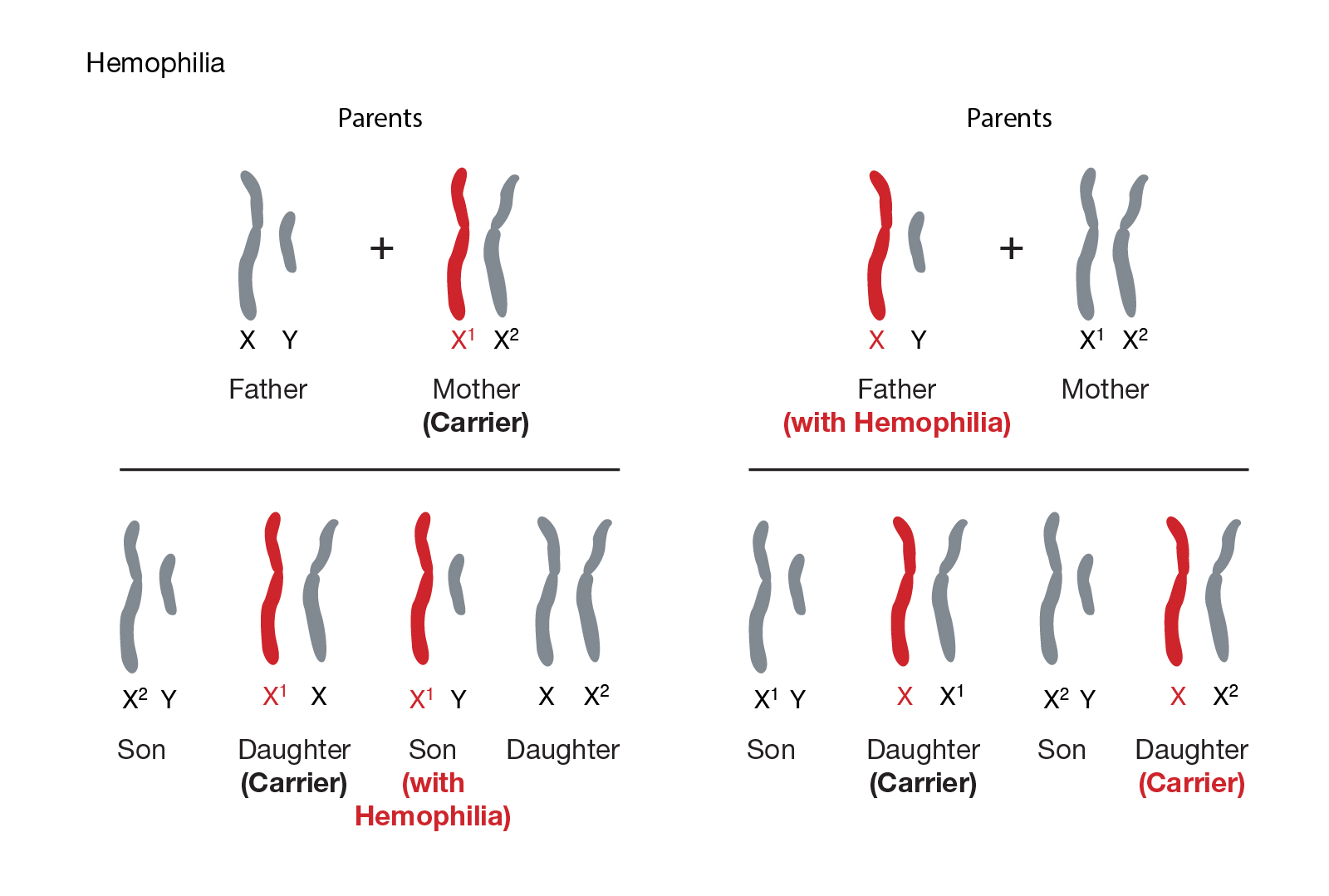IB Biology SL (Standard level)- 2024 – Practice Questions- All Topics
Topic 3.4 Inheritance
Topic 3 Weightage : 23%
All Questions for Topic 3.4 – Mendel’s Laws, Haploid Gametes, Types of Zygosity, Modes of Inheritance, Punnett Grids, Sex Linked Genes, Gene Mutation Rates, Pedigree Charts, Role of Environment, Lethal Alleles, Epistasis, Pleiotropy, X-Inactivation, Mosaicism
Question
What are all the possible phenotypes of children born to a mother with blood group AB and a father with blood group ?
AB only
A and B
AB, A and B
AB, A and O
▶️Answer/Explanation
Ans: C
Question
Which genotype would be normally found in a gamete?
Rr
RS
rStt
TUt
▶️Answer/Explanation
Ans: B
An allele is a specific variation of a gene, or specific segment of DNA. Different alleles produce slightly different proteins, which function in different ways. In dominant/recessive relationships, the recessive allele produces a non-functional protein. The dominant allele produces a functioning protein. Therefore, if RS is a recessive allele, it will only show its effect if the individual has two copies of the allele (also known as being homozygous).
Note: Due to the information in the question is insufficient so we cant predict so far than the given explaination.
An allele for lactase persistence allows humans to digest milk as adults. People who lack this allele are lactose intolerant in adulthood.

What is the pattern of inheritance?
A. Lactase persistence is sex-linked recessive.
B. Lactase persistence is autosomal recessive.
C. Lactase persistence is sex-linked dominant.
D. Lactase persistence is autosomal dominant.
▶️Answer/Explanation
Markscheme
D
The diagram shows a pedigree of cystic fibrosis, in which the black colour indicates the presence of cystic fibrosis.

What is the probability that the individual labelled X is a carrier of cystic fibrosis?
A. 1.00
B. 0.50
C. 0.25
D. 0.00
▶️Answer/Explanation
Markscheme
B
It seems the sister of X has cystic fibrosis, her genotype is (AA) & both the parents are carriers (Aa).
The Punnett between two carriers of cystic fibrosis, clearly shows that 50% or 0.50 of the offspring (including the person X) will be heterozygous or carriers of cystic fibrosis.
A a
A AA Aa
A Aa aa
Which disease is an example of sex-linked (X-linked) inheritance?
A. AIDS
B. Down syndrome
C. Sickle-cell anemia
D. Hemophilia
▶️Answer/Explanation
Markscheme
D

Hemophilia is an example of sex-linked X-linked inheritance because the genes associated with this condition are located on the X chromosome, which is one of the two sex chromosomes. In males (who have only one X chromosome), one altered copy of the gene in each cell is sufficient to cause the condition.
Question
A couple have four children whose blood groups are $A, B$ and $A B$. What is the likely combination of the parents’ genotypes?
A. $\quad I^A i$ and $\mathrm{I}^{\mathrm{B}} \mathrm{i}$
B. ||$^A i$ and ||$^B$
C. $\left.\left.\quad\right|^A\right|^B$ and ii
D. $\left.||^A\right|^A$ and $\left|I^B\right|^B$
▶️Answer/Explanation
Ans:A
If a couple have 4 children, each belonging to blood groups $A, B$ and $A B$ then the genotypes of the couple are heterozygous for A and heterozygous for B.
Therefore, the likely combination of parents’ genotype is $\quad I^A i$ and $\mathrm{I}^{\mathrm{B}} \mathrm{i}$.